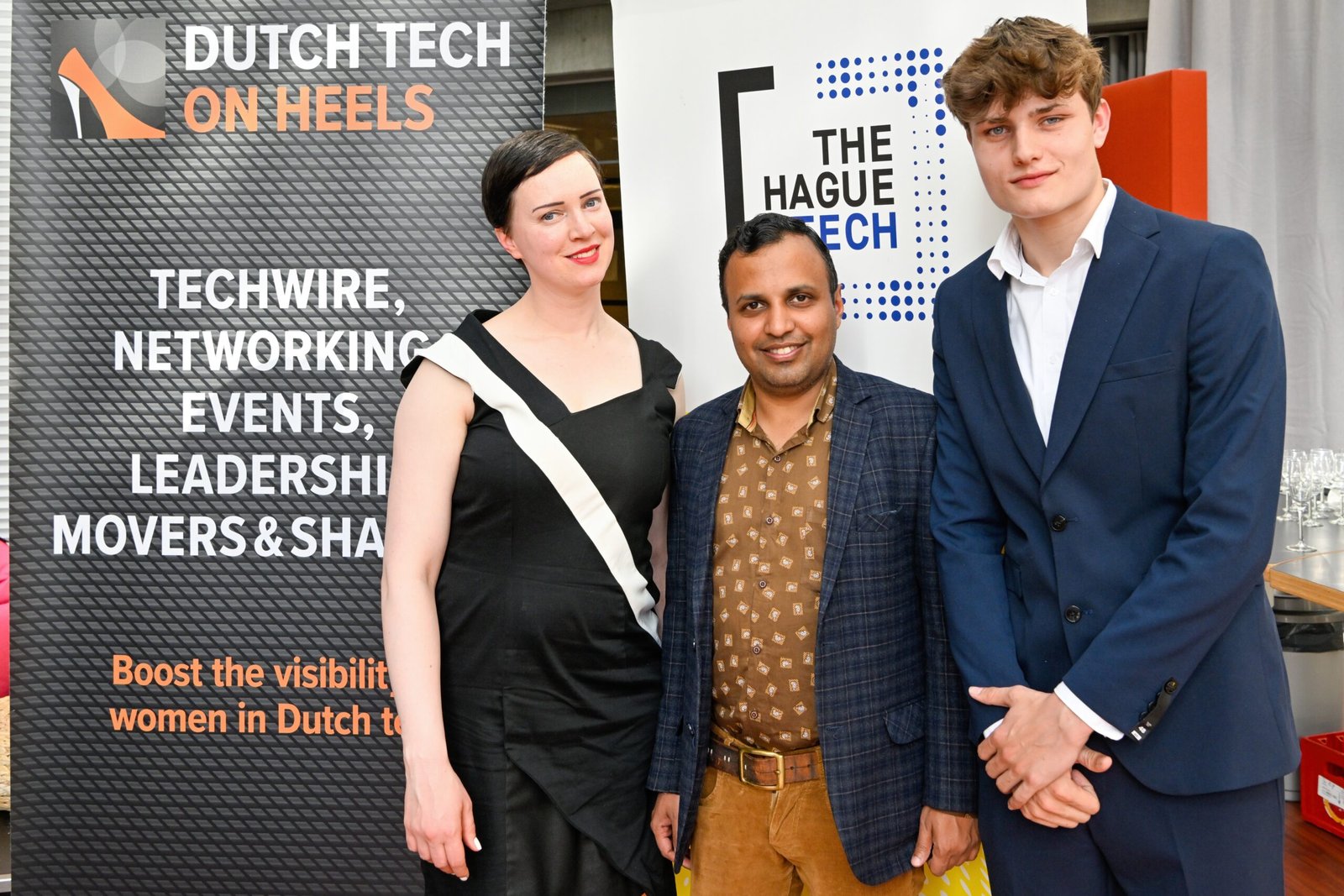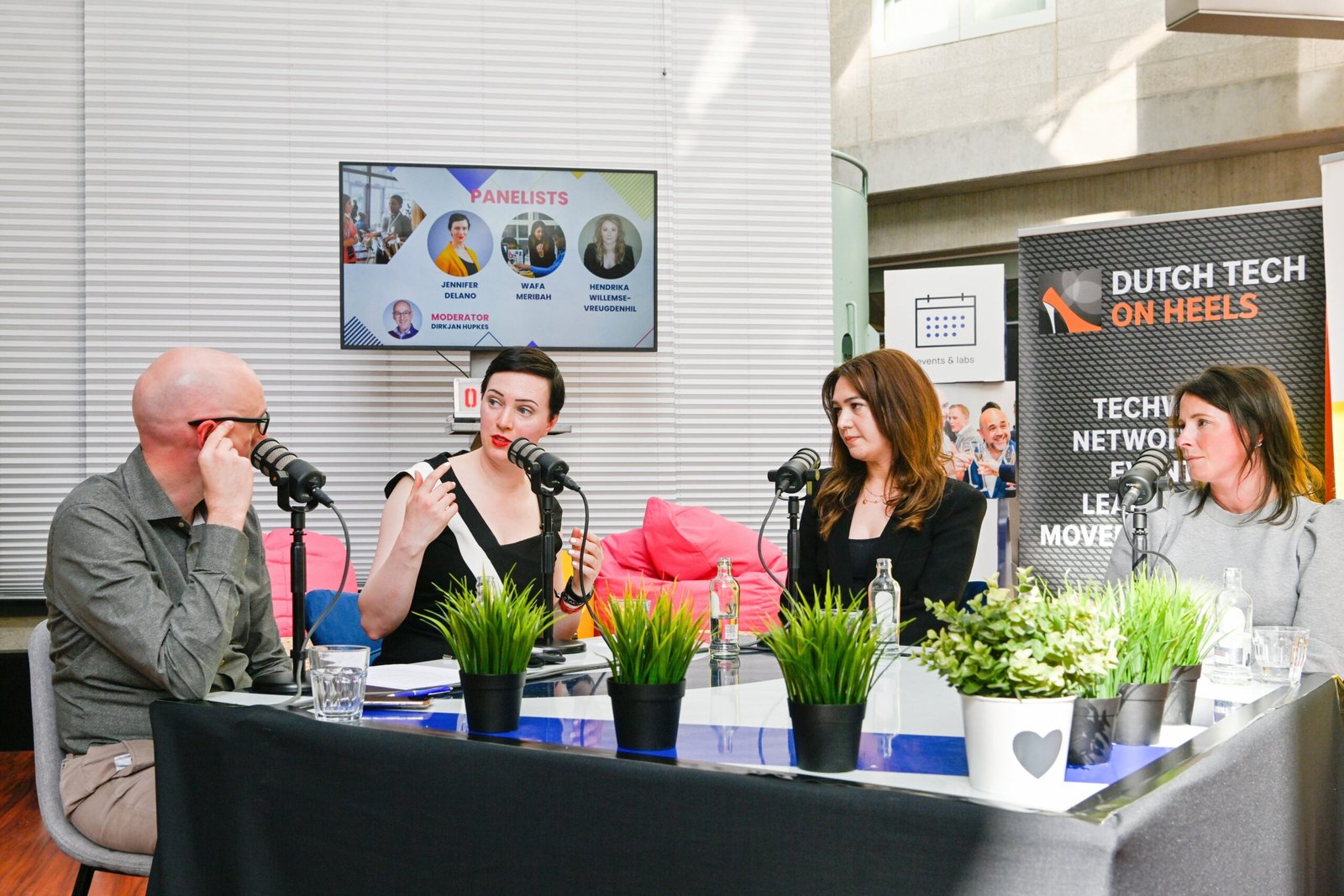 Jennifer Delano (left) and Tom van Kuijk (right)
Jennifer Delano (left) and Tom van Kuijk (right)
Introduce yourself! Tell us about yourself and what you’re doing.
Jennifer: I’m Jennifer Delano and in my working life, I run a business – PRGoeroes. I focus on making business service providers world-famous in the Netherlands by gaining media attention that you can’t buy. I am also a bestselling author with my book, Nee Zeggen Loont, which means Saying No is a Great Idea. I have recently started a new initiative called Dutch Tech On Heels. At Dutch Tech On Heels, we want to make women much more visible in the tech industry and show women that it’s interesting and fun to work in tech.
Tom: My name is Tom van Kuijk and I’m 16 years old. I’m still in high school and I’m working in this business because Jennifer gave me the chance to work with her. Working with Jennifer is really amazing, and I’m really looking forward to the future of where the business is going to go.
How did Dutch Tech on Heels start? What’s the story of that?
Jennifer: Everything started with Tom. Tom said, ‘I have entrepreneurial skills I’d like to develop. Can’t we do something good for this world? What is a problem that we can actually contribute to and do something good for?’
Last year, we had multiple meetings, and we discussed all kinds of world problems. While on a break from a meeting, I talked about women in tech having such a hard time, and how poorly visible they are. I knew that I would love to work for more women, but in my business, I mainly promote men in tech and I struggle to find women. Tom said, ‘This is something we can do about.’ From that point, we began to build on this idea and here we are, a year later.
Dutch Tech On Heels is a working content platform where we have a tech wire, and we highlight women in tech and share their stories.
What’s your journey been like over the past year? What are the challenges that you’ve come across? What have been your highlights?
Tom: It’s been a very personal journey for me. It’s the first time in my life I’ve been part of a business and a business environment. I learn so much!
Jennifer: The biggest challenge was and continues to be that women are way too modest, and so we had such a hard time finding women in tech to speak up. We had an idea, and we were building the platform, but we were still searching to find women who would like to be interviewed. We needed these interviews in order to launch this new tech content platform. Speaking to women in tech was our whole platform and our focus. I found myself asking ‘Can you please join us by doing a leadership interview?’ We sent this request to a lot of women, and I had to beg them to send in their answers. I even interviewed myself because we needed at least three interviews. But this is making my point; we women are so far too modest!
What kind of women do you want to be calling more of? Women in tech, is there anything else? Qualities or anything else that’s specific about the type of women you work with?
Jennifer: It would be great to get connected to C-level women in tech, where Holland is one of the areas where they have clients or they want clients. I really would like to connect with these women and showcase them on the platform.
I would love for them to go to the platform and let us know when they have an update. For example, when they change their position or change their business, we would publish their news. They would use the platform to keep people updated with their movements. By doing this, women in tech can show up for themselves and inspire other women.
 Often, you need to see it before you believe it. For a lot of people, seeing is believing. When we see other women working in tech, having fun, enjoying themselves, and making a career out of it, we can actually believe that it also might work for us. This might not be new for you, but this is new to a lot of women out there.
Often, you need to see it before you believe it. For a lot of people, seeing is believing. When we see other women working in tech, having fun, enjoying themselves, and making a career out of it, we can actually believe that it also might work for us. This might not be new for you, but this is new to a lot of women out there.
If I go to a business, and I ask the men there, ‘Where are the women?’ there might be a woman bringing coffee, or doing the administration or something, and that’s it. The number of pictures that I have of men with blue blouses, and the same haircut and age. I’m thinking, ‘Where are the women?’ Like, come on, and then they start talking and say, ‘We really can’t find them.’
A lot of companies in tech know that they need women in their workforce. However, a lot of businesses are basically waiting for women to spontaneously call or apply for their basic job descriptions, and that is not happening. So, they hire men again. It’s simply not good enough.
What should they do? When they are hiring and they don’t get any women applying?
Jennifer: The first thing they should do if they have a long list of requirements, is write something along the lines of ‘if you don’t match all the queries, but you feel the vision, the mission, and where we want to go, then we would still love to get in contact with you. Send us an email.’ Because women only react when they see 100% fit. But men look at it differently like, ‘I can do this. Otherwise, I’ll Google it.’ Or ‘Oh, I like the salary. Let’s react to it.’ Whereas “fake it till you make it” is not a “women” thing. Employers could make it a little bit easier for women and ask them to reply – or get in contact anyway. Discuss what they can contribute and maybe they’re a much better match than all these men applying, simply because they like the salary.

